Geography: coastal landscapes
1/42
There's no tags or description
Looks like no tags are added yet.
Name | Mastery | Learn | Test | Matching | Spaced |
|---|
No study sessions yet.
43 Terms
How do waves form?
by the wind blowing over the sea, friction = ripples = waves
what is the fetch?
The distance the wind blows across the water, the longer the fetch- more powerful the wave
What are the features of a constructive wave?
- lower height
- longer wavelength
- lower frequency
- swash is greater than the backwash
- sediment is deposited in the coast (constructing land)
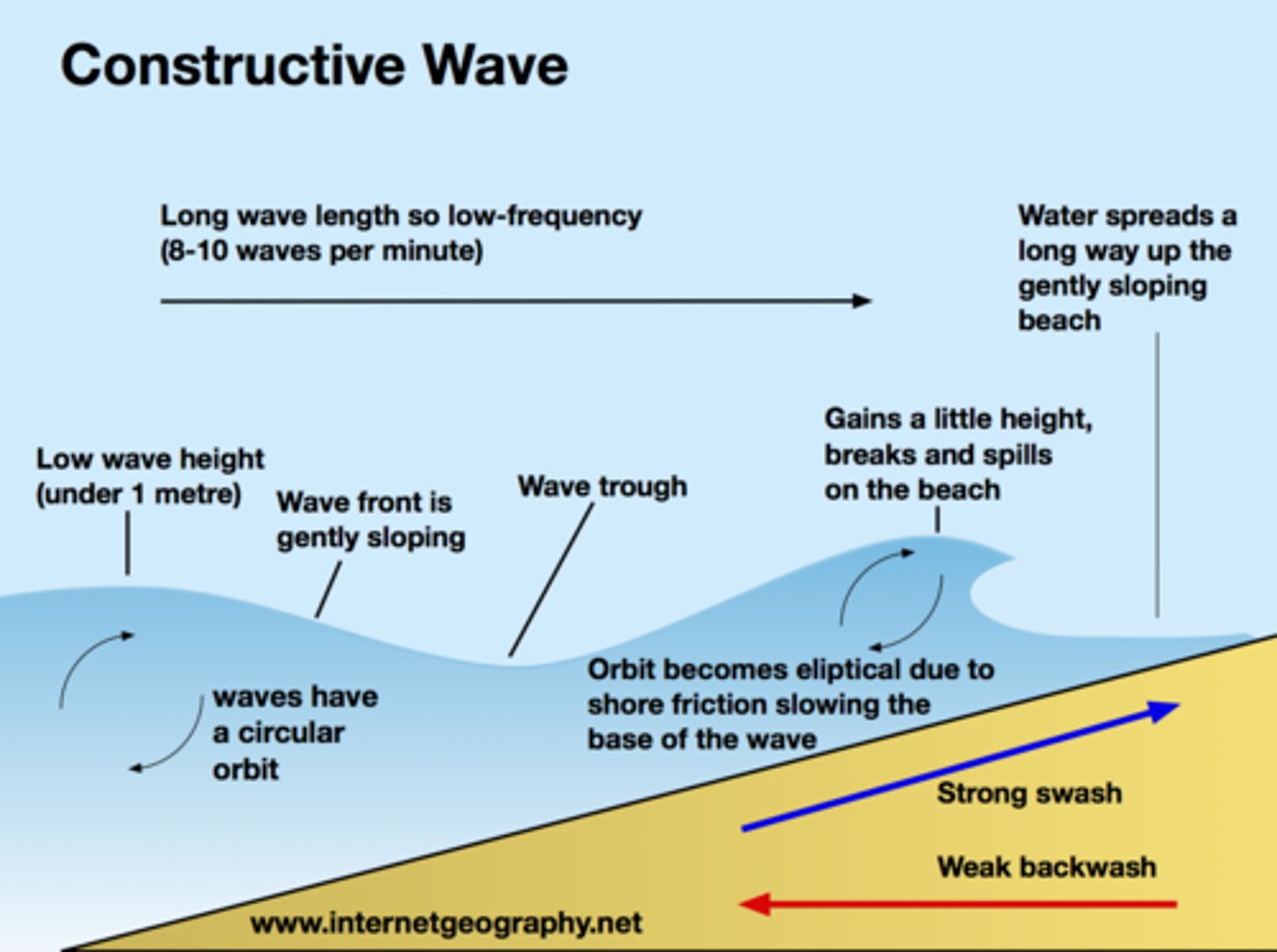
What are the features of a destructive wave?
- steeper wave
- shorter wavelength
- more frequent
- stronger backwash
- erosion takes place
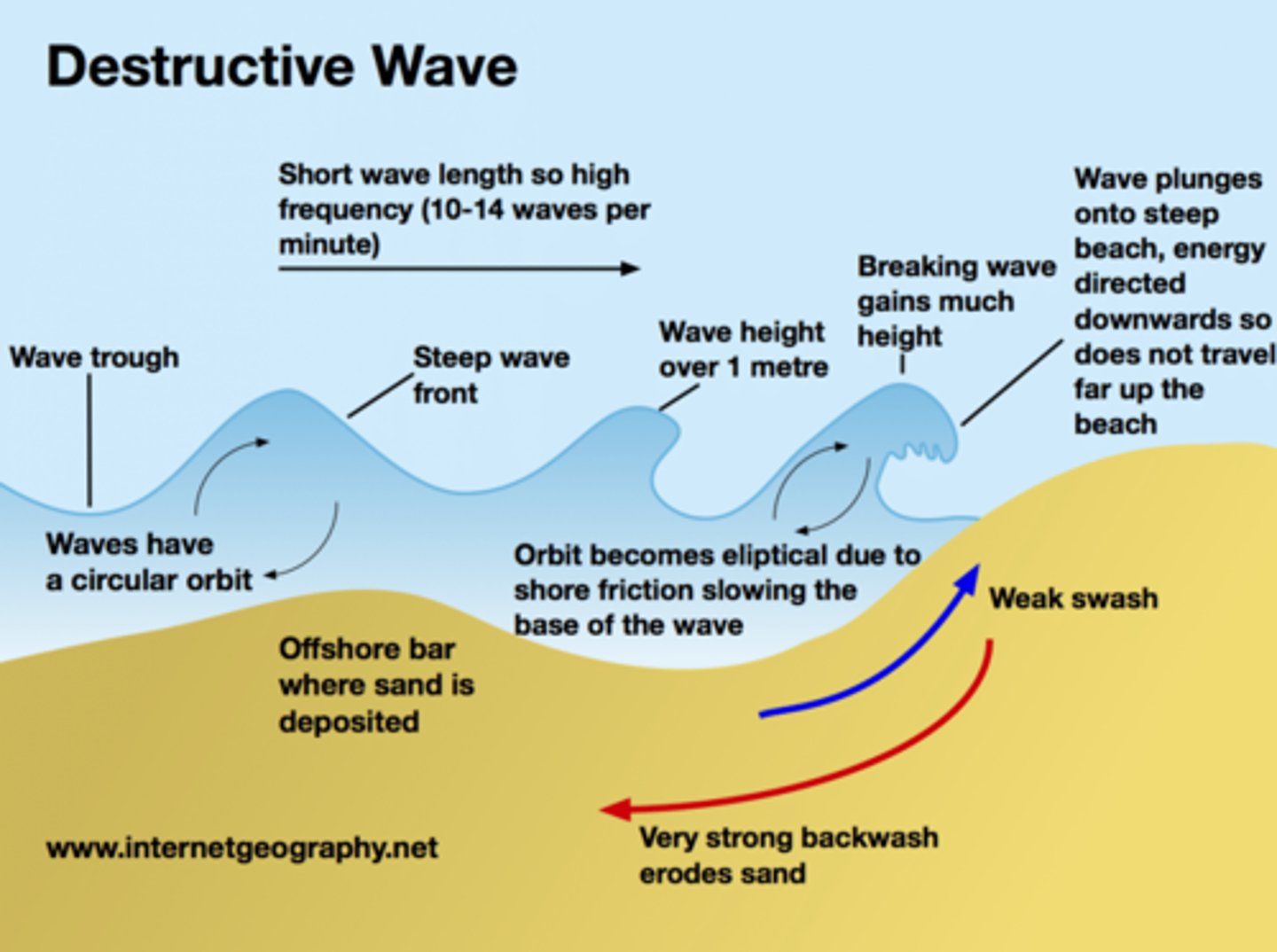
What is attrition?
When rocks bang against each other and break, creating smooth, round rocks.
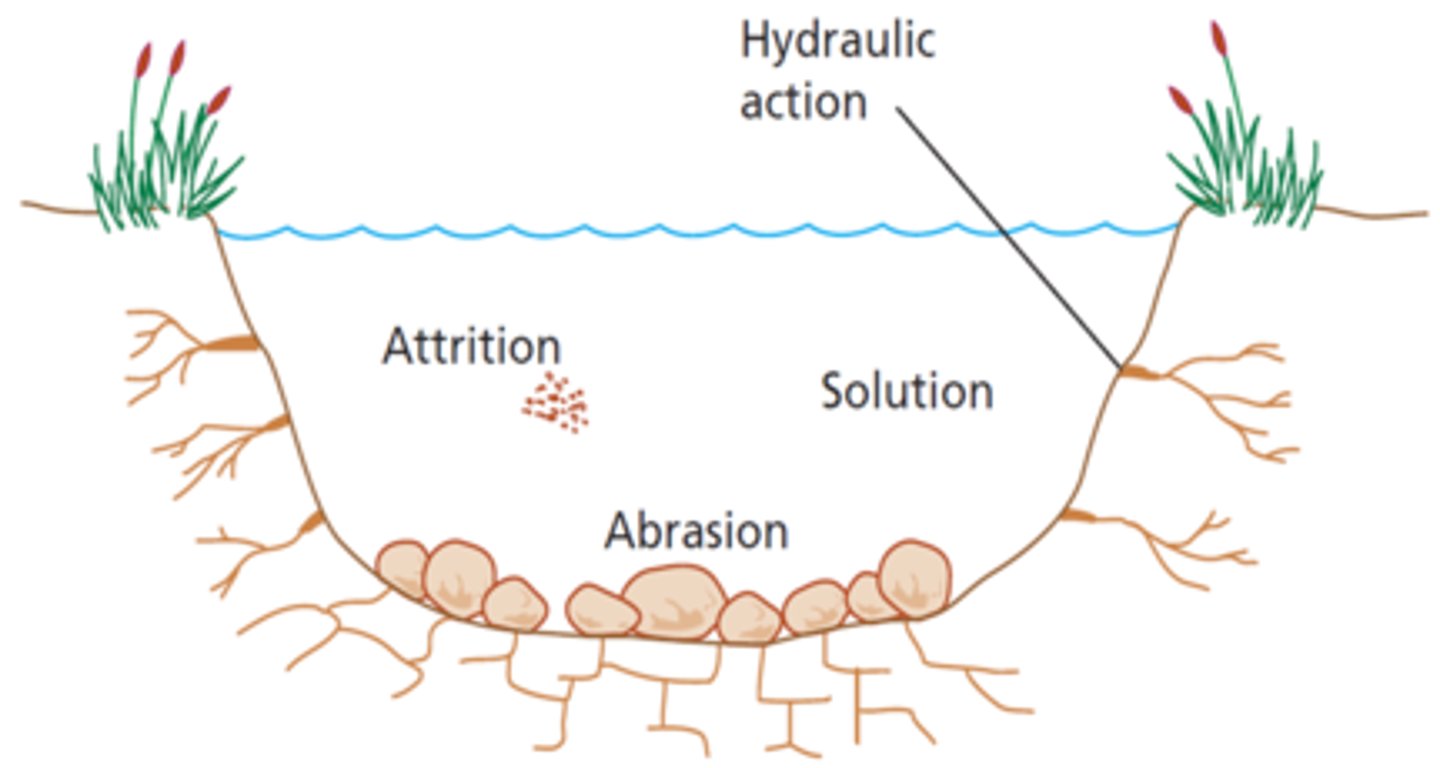
What is abrasion?
Waves smash rocks and pebbles on the shore onto a rock/cliff face, and they break and become smoother.
What is corrosion?
When mildly acidic seawater causes alkaline rock such as limestone to be eroded
What is mechanical weathering?
The type of weathering in which rock is physically broken into smaller pieces
What is freeze-thaw weathering?
When water gets into cracks in the rock. The water freezes and expands, putting pressure on the rock. The ice then thaws releasing the pressure. If this is repeated, bits of the rock will fall off.
What is chemical weathering?
The change in the internal structure of the rock through chemical modification
What is longshore drift and how does it work?
Longshore drift is the process where the waves transport material, such as sand along the beach in the direction of the prevailing wind.
The swash moves material up the beach at an angle, as the waves approach in a similar direction to the wind.
The material then moves back down the beach at 90° due to gravity, this is the backwash.
This movement continues along the beach in a zig-zag motion in the direction of the prevailing wind.
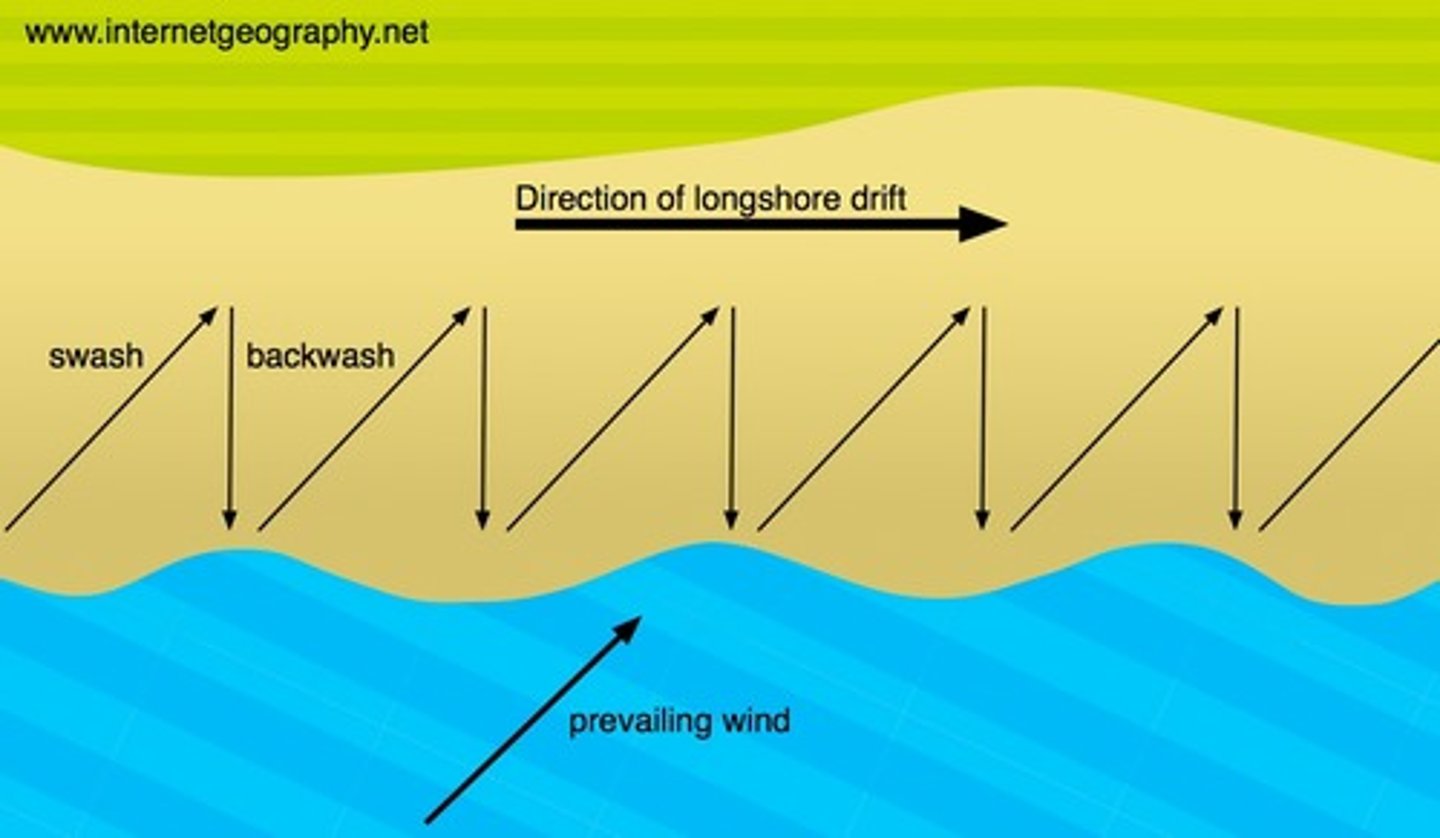
How does a wave cut notch and platform form?
1) the sea crashes the base of the cliff between the high and low water mark- a wave cut notch forms
2)abrasion, corrosion and hydraulic action extends the notch back to the cliff
4) the cliff becomes unstable, then collapses
5)the backwash of the waves carries away eroded material- a wave cut platform is left behind
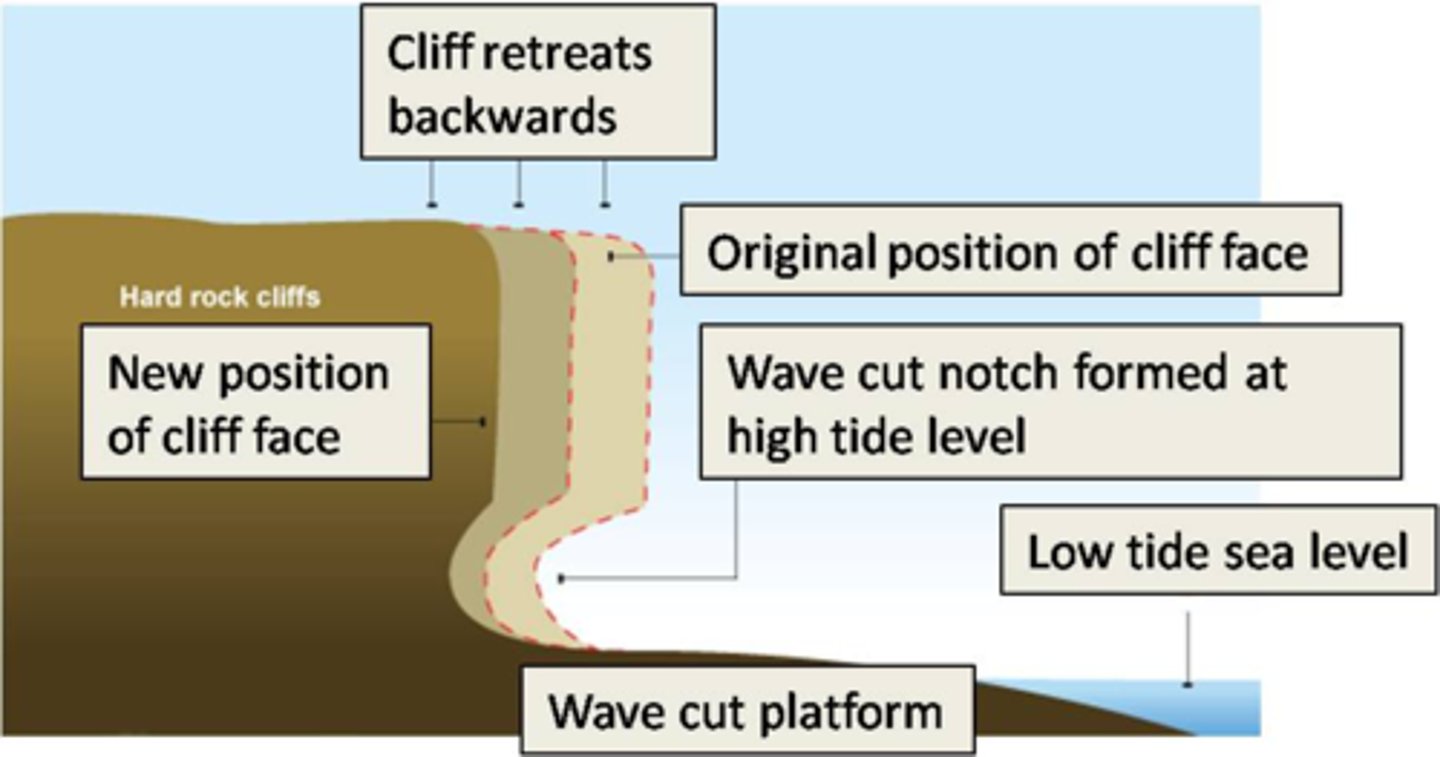
How does a spit form?
1) spits form at sharp bends in the coastline. Longshore drift transports sand and shingle past the bend and deposits it in the sea.
2) strong winds can from a recurved end in the spit
3) a sheltered area behind the spit causes material to accumulate
4)mudflats/salt marshes can form here
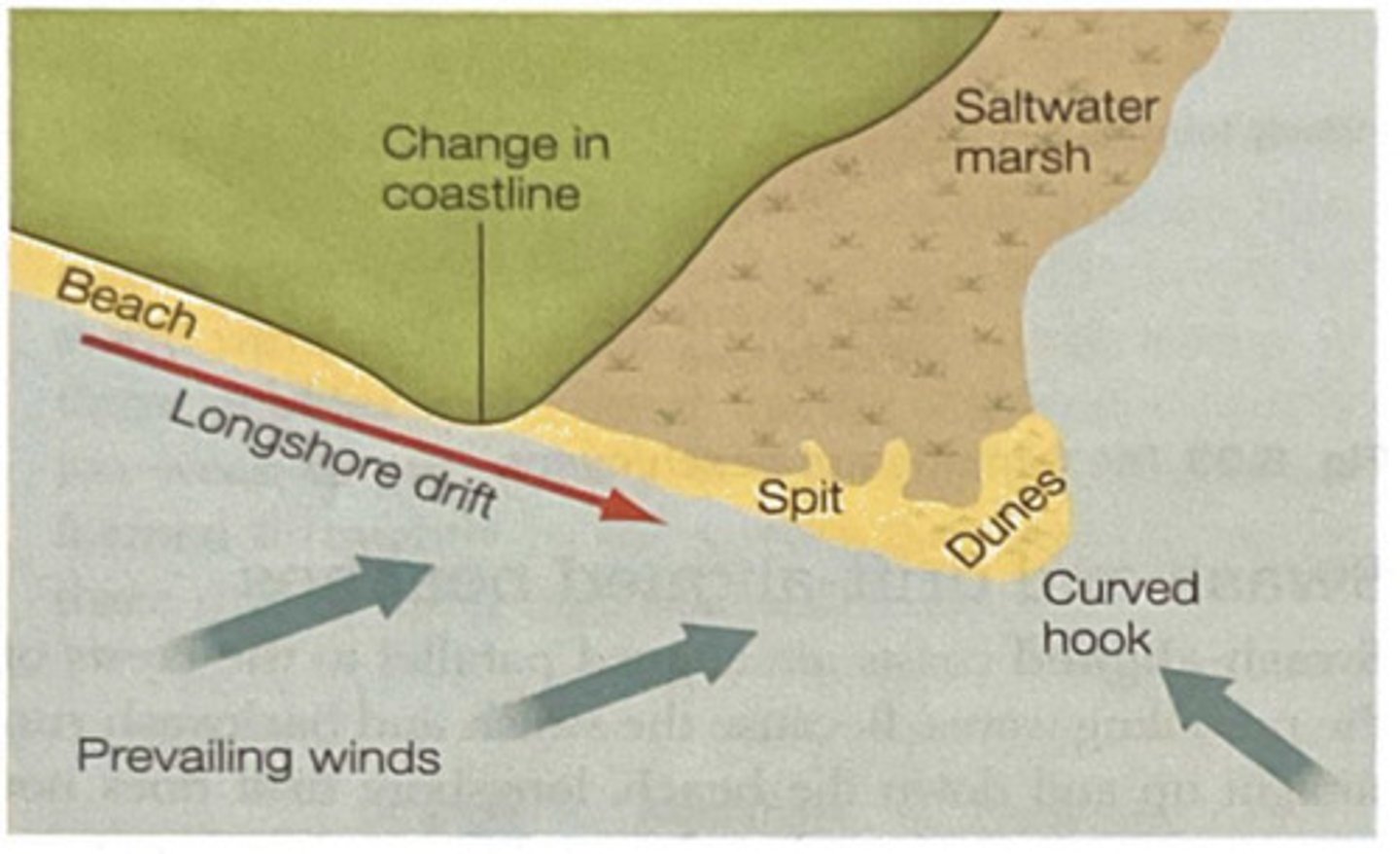
How is a bar formed?
1) a bar is formed when a spit joins two headlands together
2) the bar can cut off the bay
3)therefore a lagoon form behind the bar
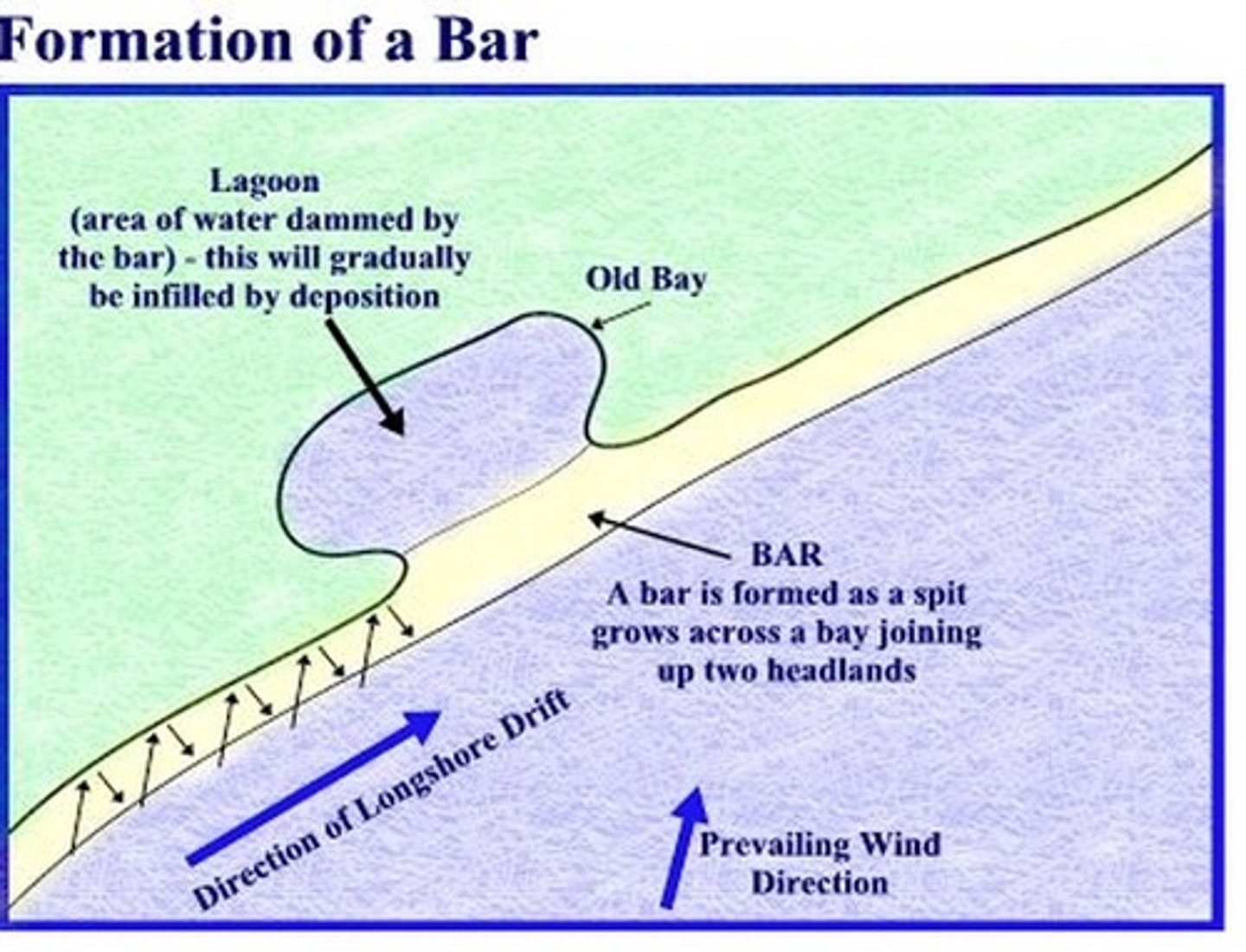
What is hard engineering?
The use of artificial structures to control natural processes
What is soft engineering?
The use of natural more environmentally friendly methods that work with natural processes to protect the coast
What is beach nourishment?
The addition of sand or shingle to an existing beach to make it larger or wider - bigger beaches absorb more energy. The sediment is usually obtained offshore locally so that it blends in with the existing beach material. Cost: £500,000/100m
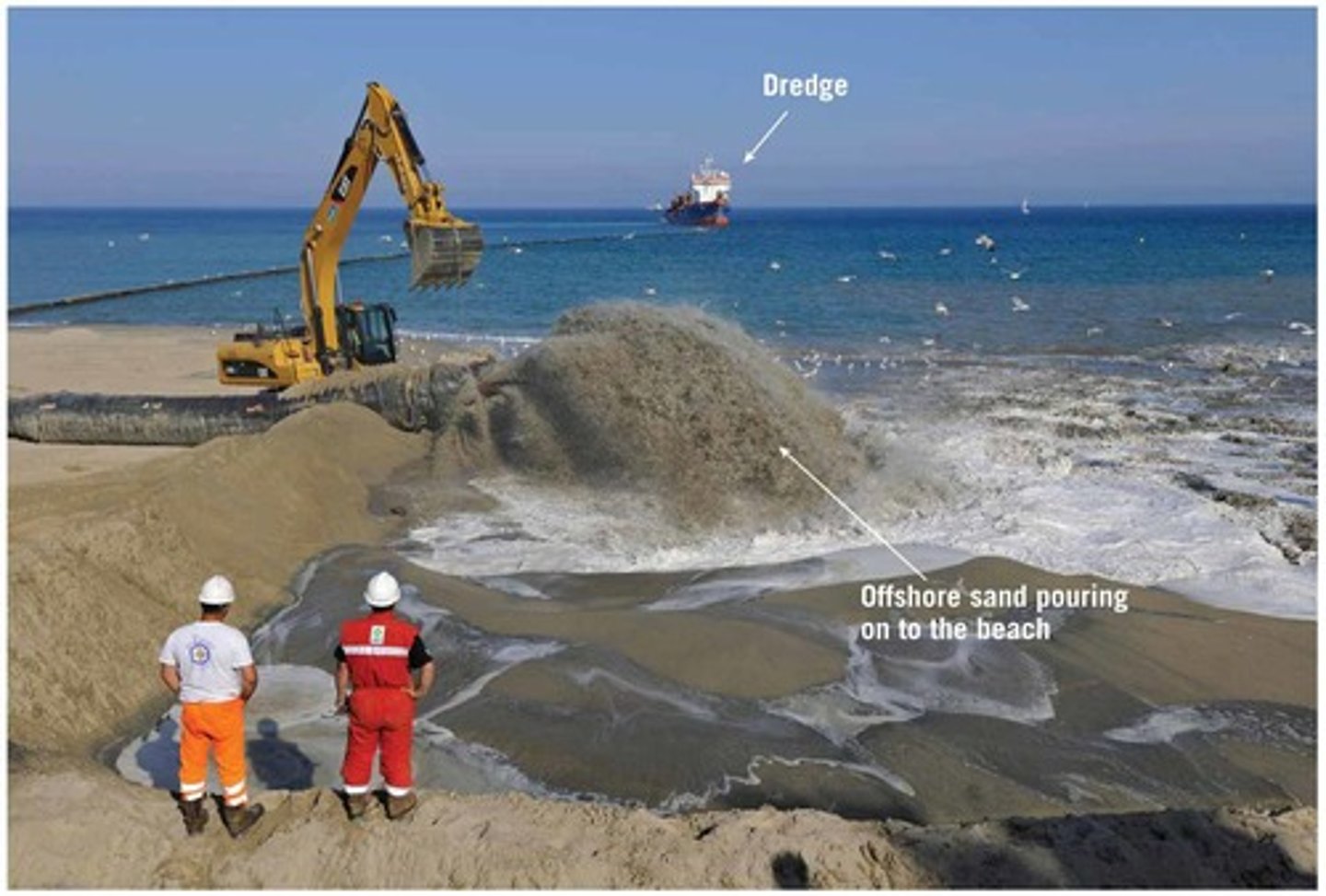
advantages and disadvantages of beach nourishment
:) relatively cheap and easy to maintain, blends in with existing beach, increases tourist potential as it is a bigger beach
:( needs constant maintenance unless structures are used to retain the beach
What is dune regeneration?
Effective buffers to the sea that are easily damaged and destroyed by trampling Marram grass is used to stabalise + to help them develop. Fences can be used to keep people off newly planted areas. Cost: £200-2000/100m
advantages and disadvantages of dune regeneration
:) Maintains a natural coastal environment, relatively cheap.
:( Time consuming to plant grass, can be damaged by storms
people dont respond well from being prohibited from an area
What is rock armour/rip-rap?
piles of large boulders dumped at the foot of a cliff, the rock force the waves to break, absorbing their energy and protecting cliffs. Cost: £200,000/100m
advantages and disadvantages of rock armour
:) Cheaper than a sea wall and easy to maintain.
Can be used for fishing + provide interest to the coasts
:( Does not fit with the local geology, as the rock has been imported from other areas.
The rocks are expensive to transport + v obtrusive.
What are gabions?
A wall of wire cages filled with rocks that can be built up to support a cliff & provide buffer against the sea Cost: £50,000/100m
advantages and disadvantages of gabions
:) cheap + flexible, improves drainage of cliffs, can become vegetated and merge into landscape
:( unattractive, cages only last 5-10 years before they rust
What is a groyne?
timber/rock structures built out to sea from the coast. they trap sediment being moved by longshore drift and enlarge the beach, which helps to reduce wave damage as it is a buffer. Cost: £150,000/200m
advantages and disadvantages groynes
:) Create wider beach, useful fishing structures, popular w tourists
:( cheap, starve the beaches further along the coast from longshore drift so increased erosion, unnatural & unattractive
What is a sea wall?
Concrete rock barrier against the sea, curved to reflect sea, placed at the foot of a cliff. Cost: £500-1000/metre
advantages and disadvantages sea wall
:) effective at stopping the sea, used as walkway
:(Expensive ,can look obtrusive and unnatural and high maintenance
What is hydraulic action?
as a wave crashes onto a rock/cliff face air is forced into cracks within the rock. The high pressure causes the cracks to force apart and widen, when the wave retreats air expands. Over time this causes the rock to fracture
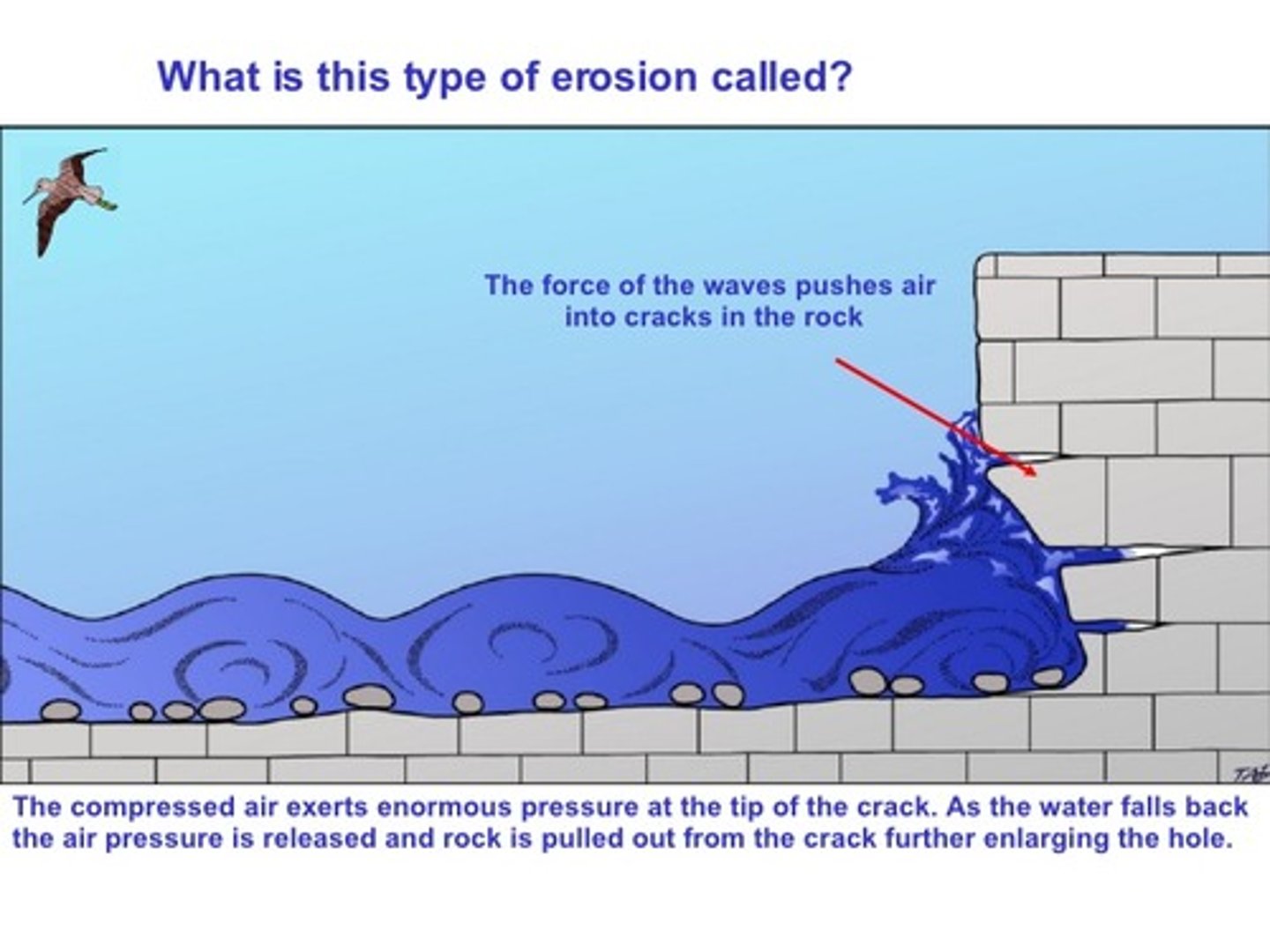
What is traction?
Large material/rocks are rolled along the sea floor by waves
What is saltation?
the bouncing of slightly lighter material across the sea floor
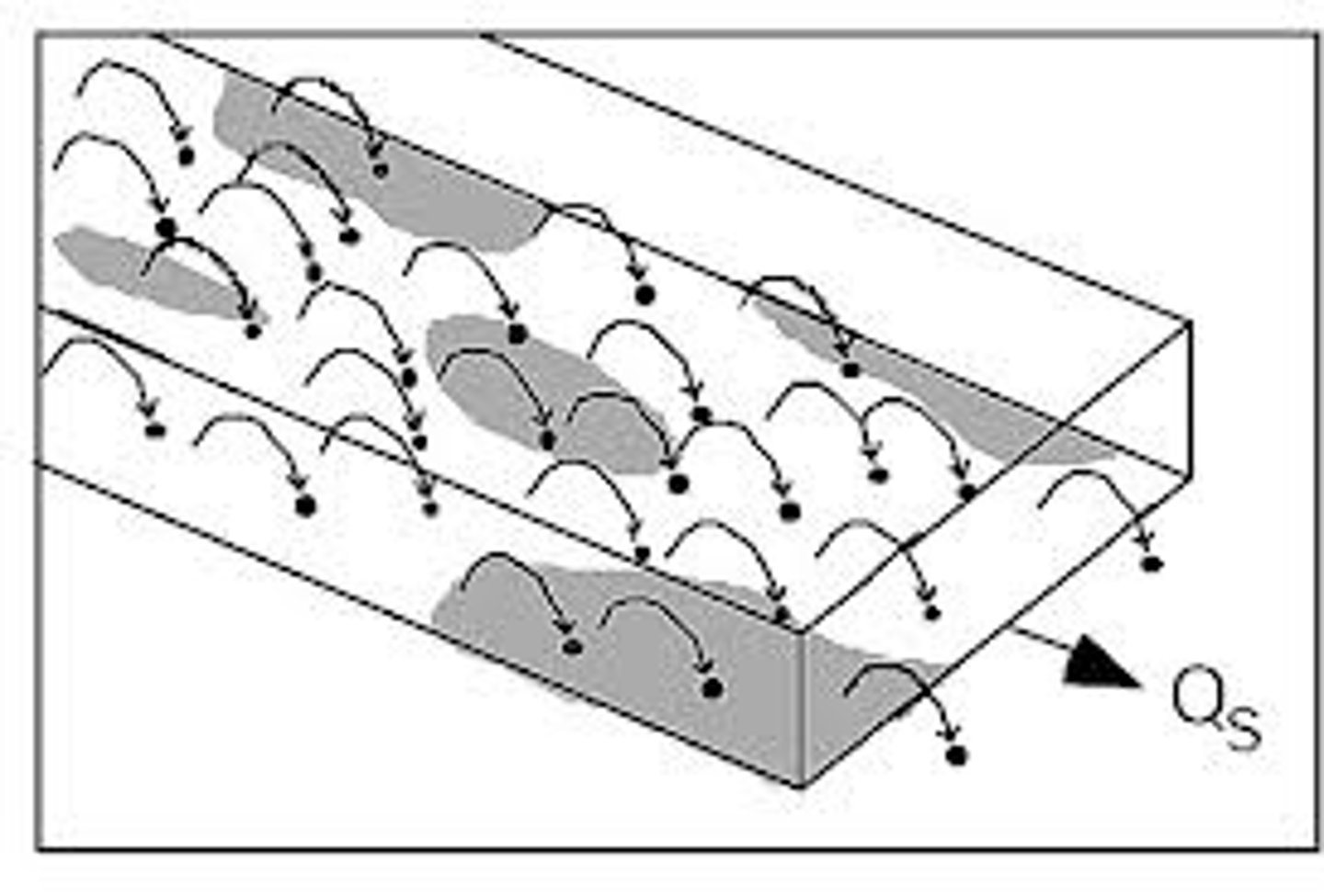
What is suspension?
Small particles of material carried along by the water
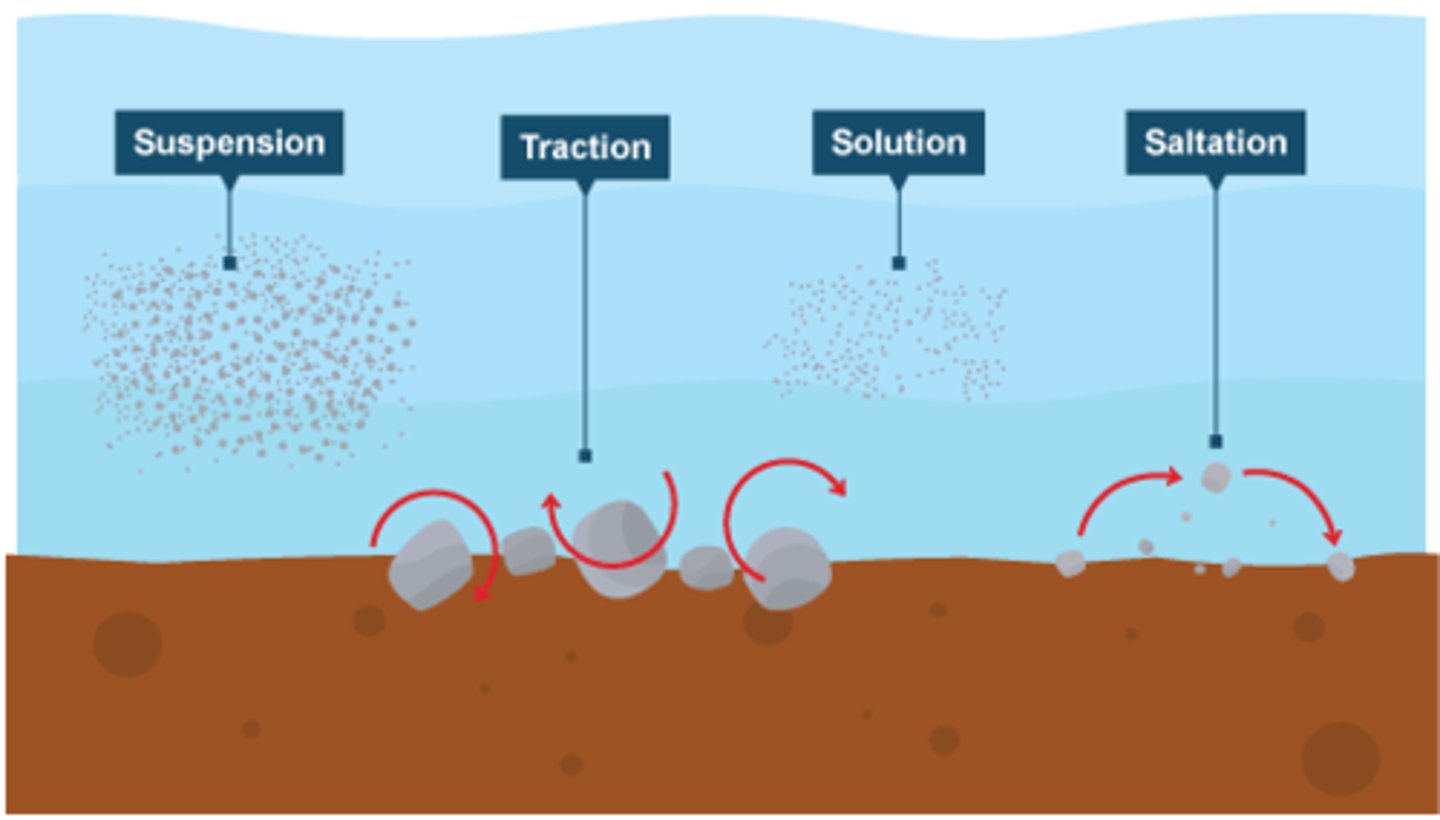
What is solution?
material dissolved and carried by water
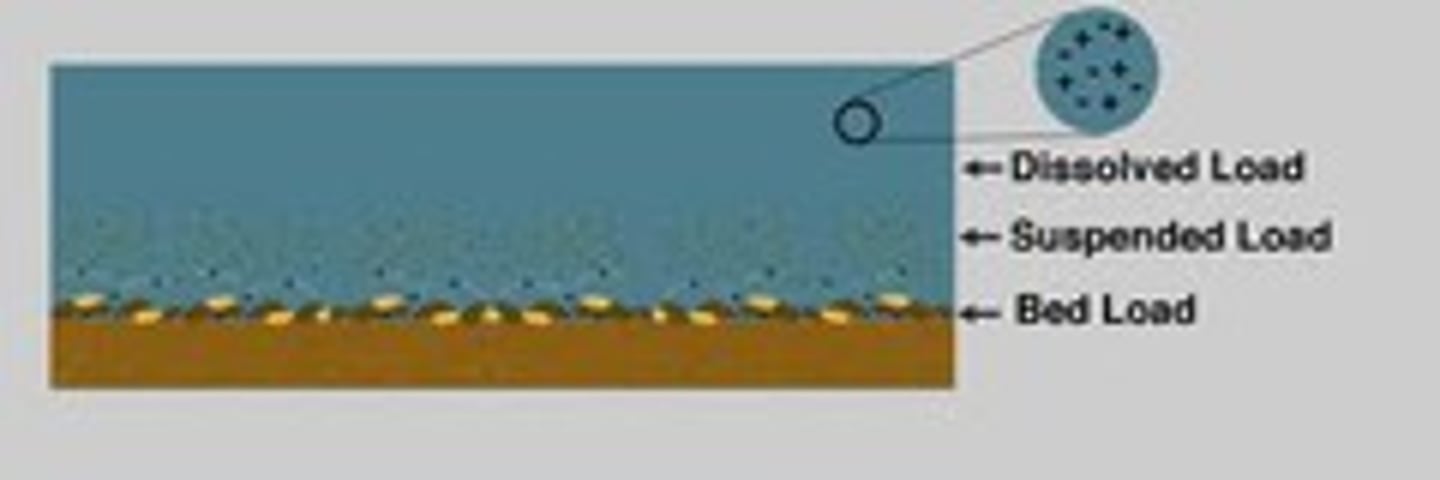
What is mass movement and name the 3 types?
the shifting of rocks and loose material down a slope, it happens when the force of gravity if greater than the force supporting it. 3 types : slides, slumps and rockfall
What is rock fall?
when rocks are weakened at the cliff face they break lose and fall under the influence of gravity.
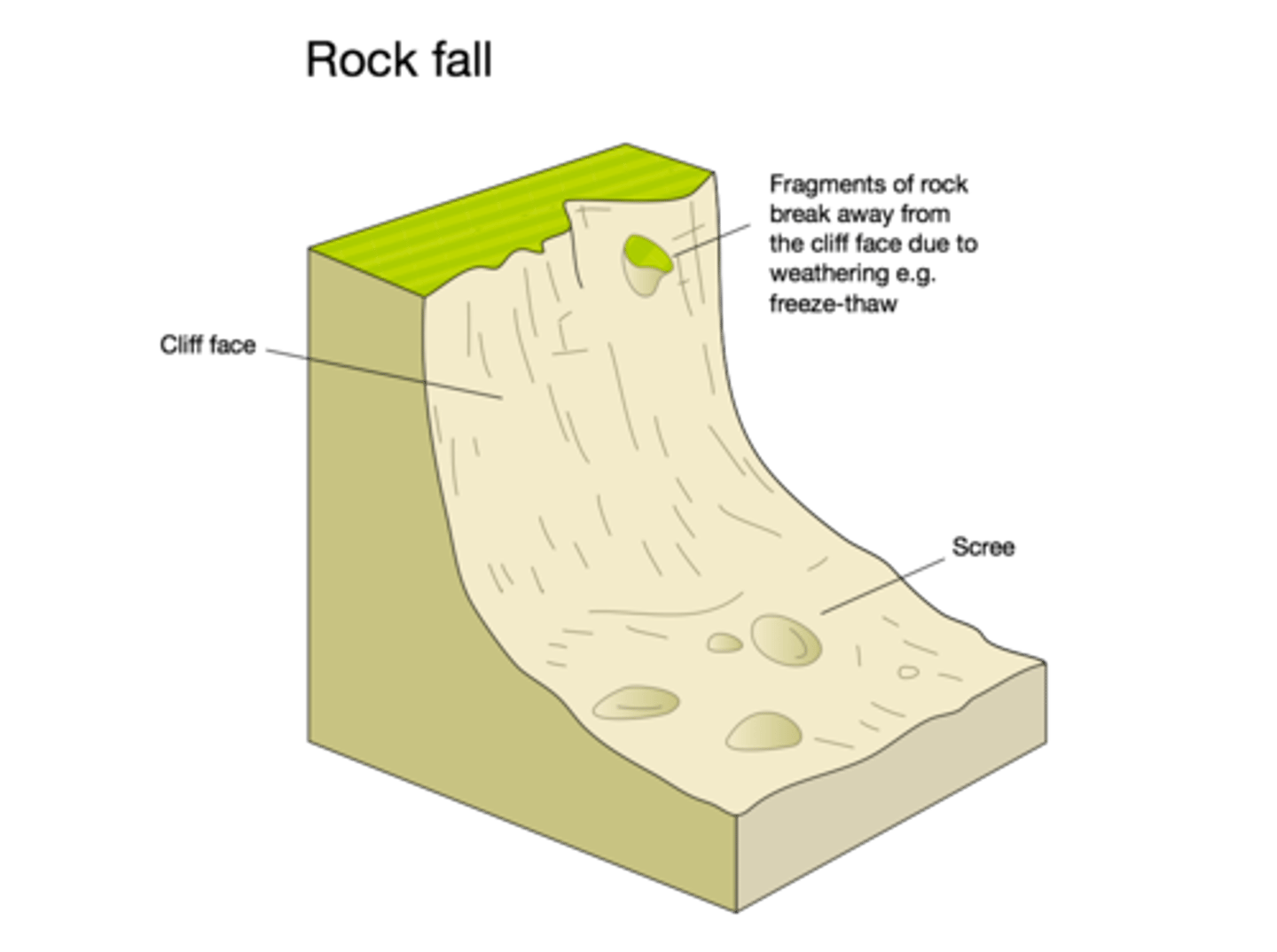
What is sliding?
Material shifts in a straight line
What is slumping?
Material shifts with a rotation
How are beaches formed?
by constructive waves, waves follow directions of prevailing wind hitting the coats at an angle, material transported in a zigzag manner, bigger beach = more deposition, low energy coastal environments create beaches, overtime material will accumulate + is composed of different sediments
explain how managed retreat works
allows a coastal area to be flooded by removing sea defences. The money spent on sea defences can be used to protect other areas prone to flooding and erosion. This is because the area could have more importance in land use. It can create natural habitats // salt marsh + habitats. However homes + businesses could be lost in process
How is the Holderness coats managed?
groynes ,sea wall, rock armour, gabions
beach nourishment, sand dune, managed retreats
what are the depositional features in the Holderness coats? (3)
saltmarsh, spit, beach
what were the 3 objectives of managed retreat at Medmerry?
1) create saltmarsh to form natural buffer to sea
2) protect farmland + caravan parks from flooding
3) encourage wildlife habitat & visitors
How do headlands form?
alternating bands of hard and soft rock run perpendicular to oncoming waves
waves crash into the headlands and enlarge the cracks usually by hydraulic action and abrasion
the soft rock is eroded quickly forming a bay
the hard rock erodes slowly and is left protruding out forming a headland